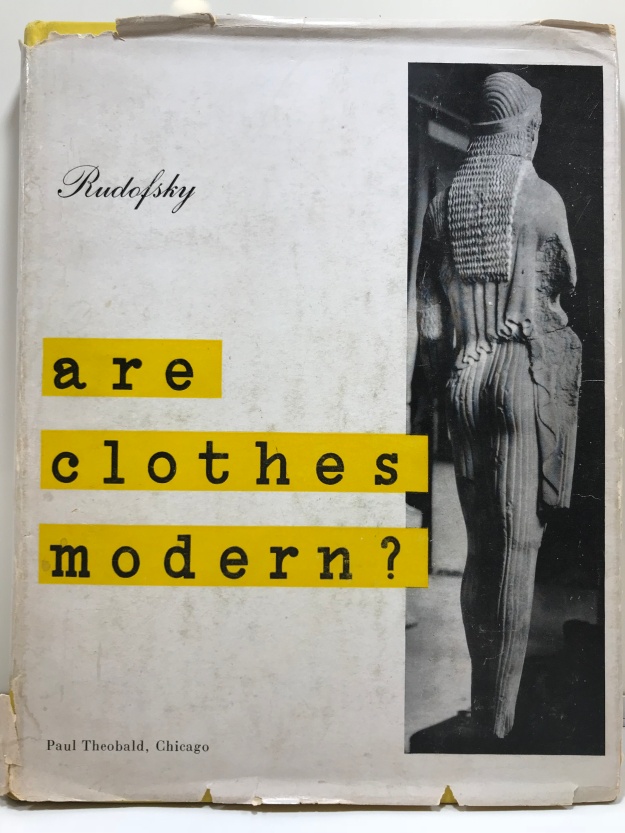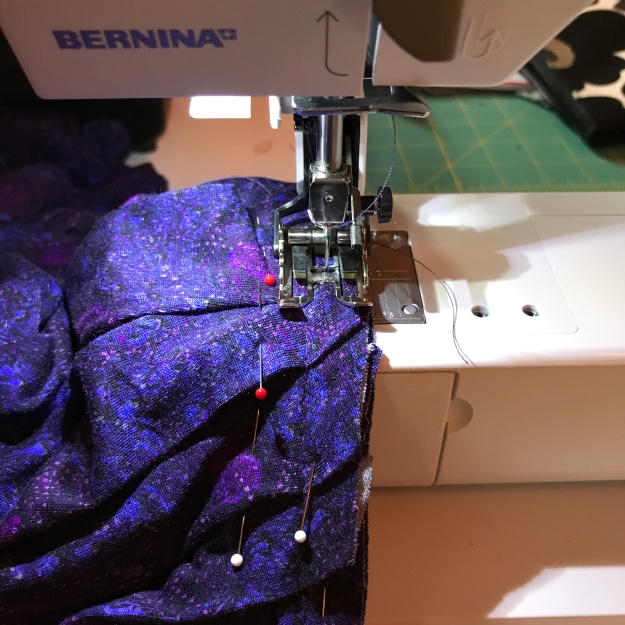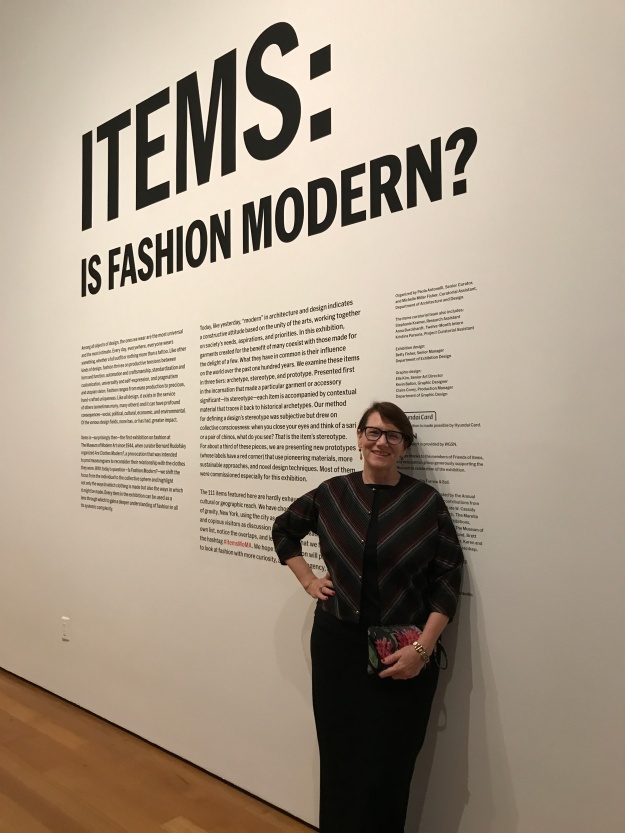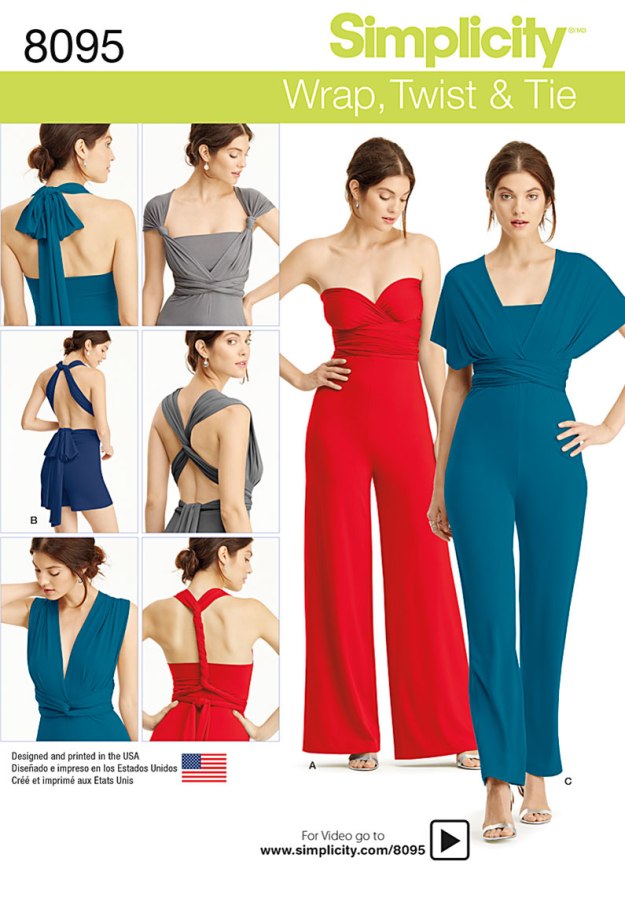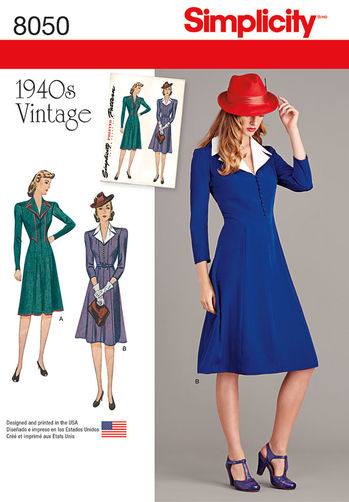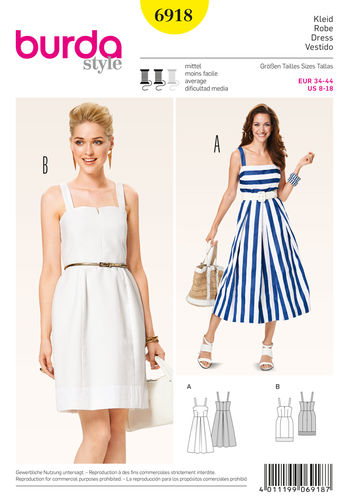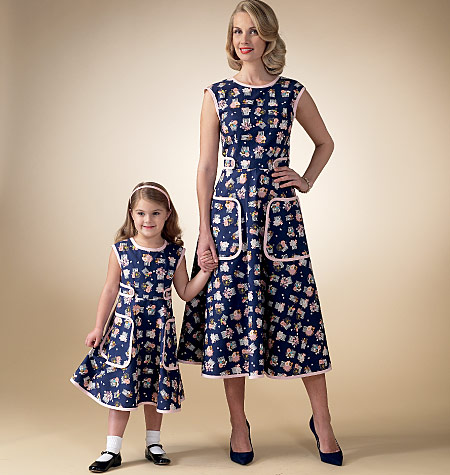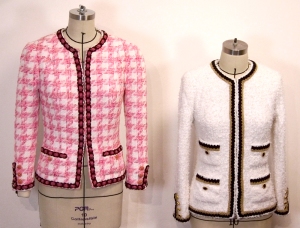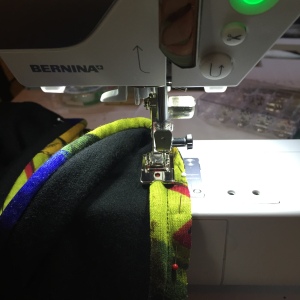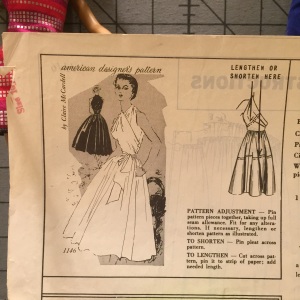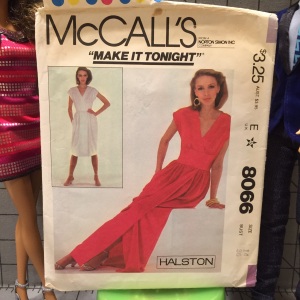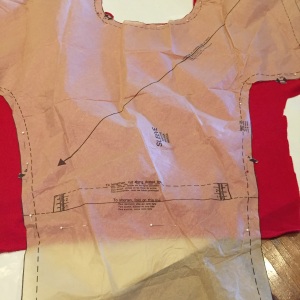So I needed to make something for the Oscars.
I had some gorgeous silk/wool/metallic fabric I’d scored at B&J Fabrics in NYC during the fall. B&J is a well-organized, somewhat pricey shop on 7th Avenue with a nice selection of fabrics for dressy events, and lots of knowledgeable help.
I had a repro pattern for a 30s swing jacket, so I set to work stitching it up, even inserting some silk pockets.

I was so productive! I’d made a quick muslin using Swedish tracing paper, (not always a great idea, as tracing paper doesn’t have grain, so you don’t get the feel of the drape), but I thought I could fake it.
I think you can tell where this is going.
I realized as I was working with the fabric that it had some kind of Lycra in it, and it wasn’t molding at all with steam from the iron. I sewed on one of the sleeves, which turned out to have a very large and puffy cap that wouldn’t shrink up with steam, and–holy moly, I looked like General (Princess) Leia chaperoning the Jedi Academy prom! I was too mortified to take pictures!
I knew it wasn’t going to fly, so onto plan B. I had just enough fabric to make the Decades of Style one-sleeve wrap pattern #5006 (which is an original 50s design by Schiaparelli). I’ve made it before, and it’s really fun and dramatic.
I dug around in my stash for lining, and found yards of vintage signed Schiaparelli silk twill that I’d completely forgotten about! Yes!!

I made the following modifications on the pattern: flipped the pattern to put the sleeve on the left arm (because I’m a lefty), lengthened the front hem (at the belly button), shortened the ends and the sleeve (due to not having enough fabric), brought up the seam under the arm somewhat to give it more definition, got rid of the flap over the hand opening, and tacked the wrap together at the shoulder to keep it from sliding off (I put it on over my head).

Now we’re talking!

I felt really glam, yet comfy in my skin, because in late middle age, eveningwear is a challenge. (I still remember Nancy Reagan propped up in those strapless dresses with corselets and that crepey skin hanging over…yick!) And the wrap was as warm as a jacket, which helps because it’s freezing in the theater.
The day before, I’d spotted two “mature” women on their way to the rehearsal, absolutely rocking very different looks that worked equally well. Jane Fonda turned it out in creams and beige, with tailored pants, a simple knit top, and a long duster giving her height and authority. Helen Mirren was next to her in eccentric Brit style–black origami skirt, white tee that could have been Ric Owens (or Hanes), and Vivienne Westwood-style black army boots. Clearly neither one of them was throwing in the towel on style (or giving up kicking butt) anytime soon.
And I loved Jane Fonda’s ad lib that the Oscars’ set looked like “the Orgasmatron from Barbarella.”

In these Oscars posts, I usually make fun of the dresses worn by the stars, but it seems a little tacky in this era of #MeToo. I worked in TV as a producer and writer for years starting in the 80s, and let me tell you, Me Too could have been Me Three for most of us. We were just happy to have jobs at all, and knew if we complained, we’d be given a box for our photos and office plant and escorted out the revolving door that afternoon.
So the “whisper network” was real, and that’s how I knew that Rod in Master Control was known as “elevator eyes,” and that under no circumstance should I get on the CBS elevator alone with Bob, the our showbiz legend Executive Producer, because by the time you got to the basement level where the commissary was, Bob would have tried to stick his tongue down your throat.
So let’s talk about the guys, shall we!
First, George Clooney, where were you?! I know you have twins and would have shown up with spit-up on your Armani lapel, but make an effort, will ya?

Sigh.
Here’s Timothee Chalamet taking a fashion flyer in a Berluti white tux.

You’re young, adorable, extremely talented…but oh, honey, who did this to you?
Pegged pants, dark boots, and worst of all, no cummerbund to cover that saggy waistband. When I saw you in person, you looked like a kid who’d been fitted for his prom rental tux in October, then had a growth spurt. Meow, I know, but fire your stylist.
Armie Hammer, Armie Hammer, Armie Hammer!

Red velvet, my favorite flavor. He’s absolutely the only man in the universe right now who could pull off this look. (Including you, George Clooney.)
This winter I saw a number of the nominated movies, and was feeling very esoteric and removed from the whole horse race of the winners and losers, until I saw…
HONEY, GET YOUR CAMERA! IT’S THE CAST FROM BLACK PANTHER!! QUICK!!!
If you’ve been reading my blog for awhile, you know that Mr. Art Deco has been fired several times as my photographer.
But in this case, he scored the selfie prize by grabbing a total fangirl pic of me “with” the cast of Black Panther:

I attend the Marvel movies to “chaperone” my teen son, but in truth, I love them, and in particular I adored Black Panther.
According to this article in the New York Times, the costume designer, Ruth E. Carter, based the costumes on traditional African garments, but gave them a modern twist.
For Queen Ramonda’s crown, for example, Ms. Carter’s inspiration was a “traditional Zulu married woman’s hat,” and her updated version was 3-D printed, with the assistance of designer Julia Koner.

(Doesn’t it look fabulous on Angela Bassett, on the right, who not only got to be Queen in this film, but also got to portray Tina Turner in the same lifetime?)
Ruth E. Carter should win the Best Costume Oscar next year.
Look, Salmon Oscar has a caviar bowtie!

There’s Armie again. He’s looking my way, right?

Who needs you, George?
And what about my on-going feud with Meryl (of which I believe she’s unaware)? Until recently, she had a tendency to “copy” my look. I was quite upset about it, particularly when she one-upped me by wearing a “hostess set” (skirt over pants) last year.

This year, she was at it again, with a gorgeous red gown from Dior:

That’s it, you win, I can’t compete with your fabulous outfits.
Just one question, though. Did you make them?
And what about you, Daniel Day-Lewis, star of the really weird and not-my-favorite “Phantom Thread?” (Though the beautiful bespoke suits in the film, worn by Lesley Manville (the sister) and other characters, were made by Thomas von Nordheim, author of the excellent book Vintage Couture Tailoring.)
According to this interview in W Magazine, after learning to sew for several months, Daniel Day-Lewis has become sew crazy, and is chucking acting for good to become a fashion designer.
Well, Daniel, we’re all looking forward to the launch of your blog!
I got a sneak peek, and honey, it’s fabulous. I hope you don’t mind if I print a preview here:
DDL’s Major Thoughts About Sewing Blog
113 Followers. Follow Me On Bloglovin’!
I entered the Bargainista Fashionista contest on Pattern Review
Day 78 of Daniel’s Sewing Journey:
“Today was a frustrating day of sewing. My wife stood patiently for hours with her arms over her head, as I conceptualized how to insert a gusset. I went on Instagram with my sewing peeps for advice but still struggled so with the bias corners. Then Mrs. DDL’s-Major-Thoughts-Blog left in a huff after I stuck her in the armpit with a pin, and said something about making me her special toadstool omelet.
In a tizzy over the gusset, I consulted the blog Jet Set Sewing, who’s dyspeptic Bernina, Karl, recommended Lite Steam-a-Seam 2 for any and all sewing emergencies. I opened my stash closet to find some, and–what the blazes?!–my recent purchase from the Fabric Mart sale, all 78 yards, came crashing down, followed by approximately 838 buttons skittering onto the floor.
At times like these, I try not to be nostalgic for the days on the film set, when an assistant would bring me water from the Danube at precisely 12.7778 degrees celsius, whilst I stayed in method character annoying everyone for all but the five minutes per hour that I actually needed to act.
And yet, the minute I sit in front of my 1938 refurbished Featherweight (which I found on Ebay in Very Good condition for $325, including the original case and pedal, and seven of the most expensive feet), I know that giving up acting was all worth it, because, honestly, I’m just so mad for sewing!”
We feel you, Danny. And your sewing peeps are here for you when you need us, which will be probably be soon, and, I’m guessing, pretty often.
